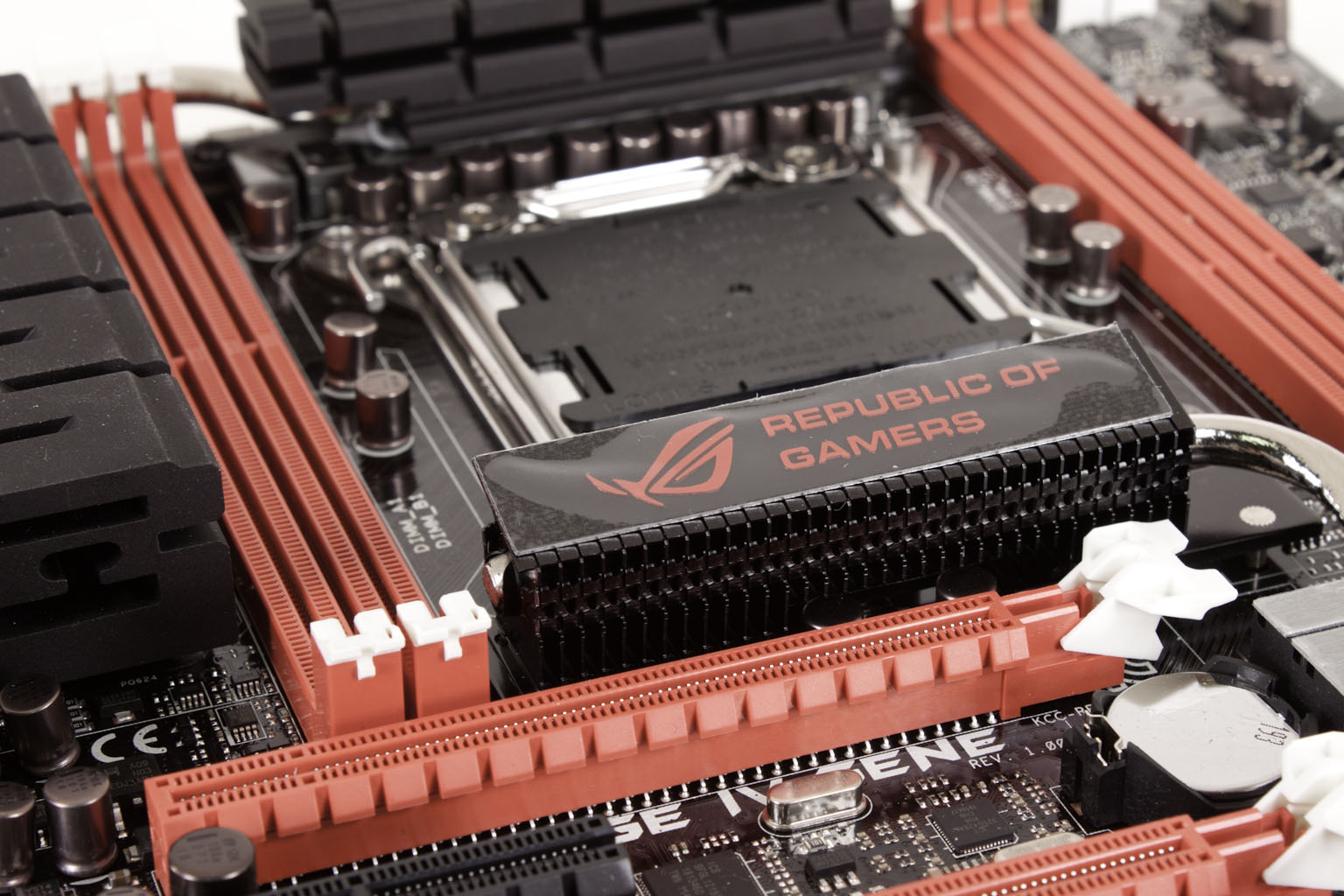Section 1 Subsystems
Memory -
Memory performance is very important on a motherboard, especially when you have a CPU with multiple cores and threads. If you have slow memory your cores and threads can become starved for data to execute. To test memory performance we run both Sisoft’s SANDRA. These two combine to not only give us accurate numbers but to validate each other. For testing at stock speeds the memory is hard set to 16000MHz while overclocking testing is done at the highest stable speed for the voltage of 1.65v this is due to the different memory dividers for each CPU. As such, the memory speeds will vary greatly. This means that the overclocked numbers are a little misleading and while they can show a trend are really only included to show if a board has a problem with memory performance at high clockspeeds.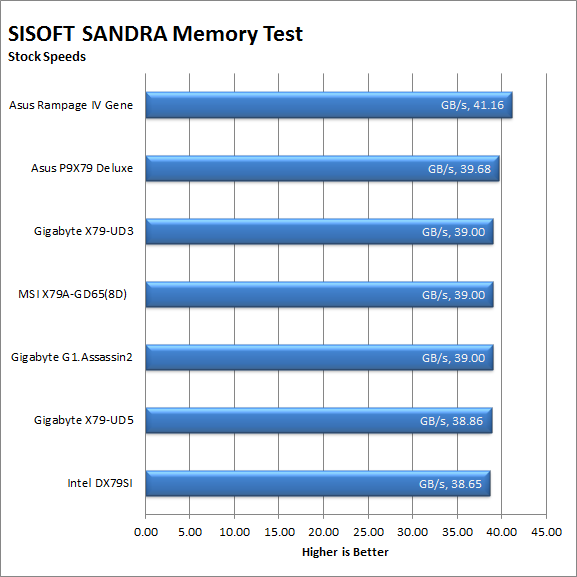
The Asus Rampage IV Gene showed off some outstanding memory performance during our testing with a solid 41GB/s potential bandwidth at stock speeds. During our overclocking run this bumped up a bit but did not scale as well as some of the other boards we have tested. The stock numbers are good news for consistent performance with multiple apps open and also when running applications that buffer a lot of data to memory (like many games are doing). We will have to see how these raw numbers compare to real-world applications.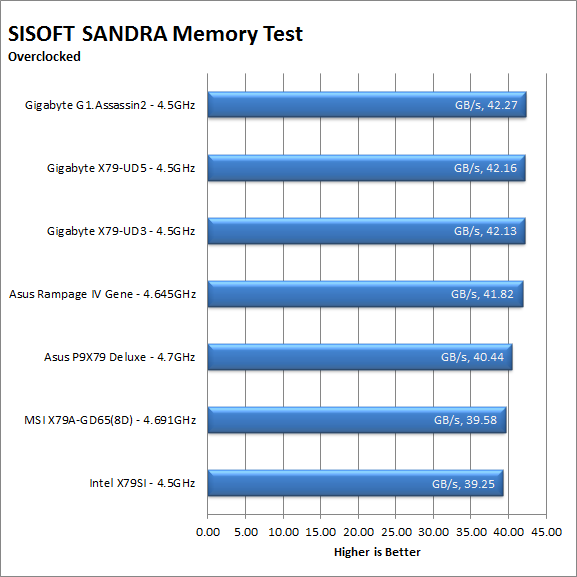
Drive performance -
Drive performance is also one of the major subsystems that goes to make up the performance of a motherboard. For our testing we use Sandra. We only test with single drives for each type of controller present on the motherboard (unless it is a professional product where we will use RIAD 5 and/or 10). We have also begun using a Seagate PS-110 USB 3 external HDD and a Kingston HyperX USB 3.0 Flash drive for our USB 3.0 performance. As a side note, we include the overclocked numbers here to make sure (again) that you are not going to see a major drop in performance due to minor instabilities at high clock speeds.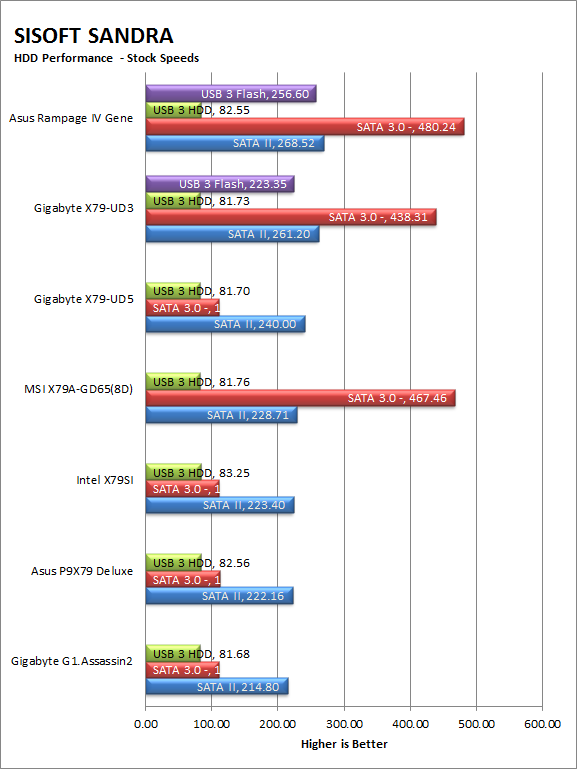
The Rampage IV Gene had the best HDD performance out of the group that we have had in the lab. Even comparing SATA and USB 3.0 in the mix The Gene simply stood out over the rest with some very impressive read times. As with our raw memory performance the numbers here are good news for potential performance with game load times, installation times and even rendering and video encoding will benefit from good drive speed.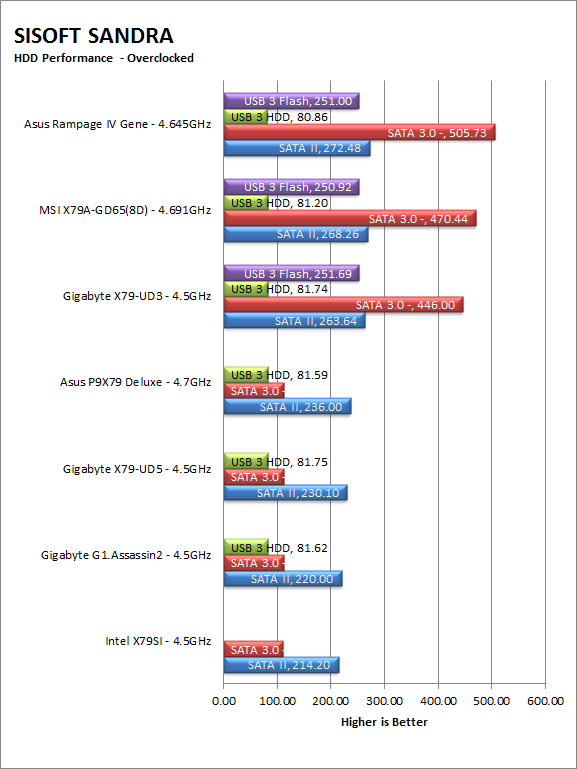
Power -
Power efficiency is another of those misnomers that we get caught up in. We hear about idle states and power gates. But what does that mean to you and I? On the surface having power management that reduces idle power sounds great and can be a benefit to someone that leaves their system on for long periods of time (and inactive) but how a system handles power under load and the delta between the two states is often more important than the idle power usage numbers. We use only P3 Kill A Watt instruments for measuring power.
Although we were more than a little surprised that the Rampage IV Gene did not do better in power efficiency we are also not too disappointed. The Gene is meant to be an enthusiasts’ motherboard and to be able to provide power when needed.
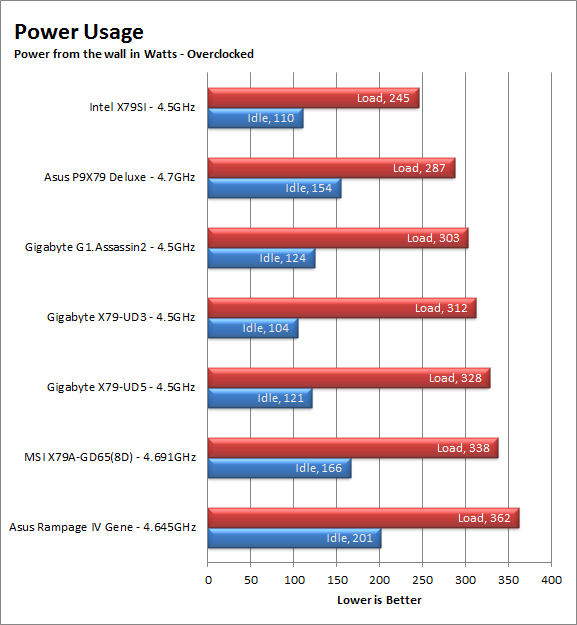
Cooling (Board Level) -
Board level cooling is an important factor in product performance and longevity. Components like the chipset, VRM modules and even capacitors need to be kept relatively cool to prevent failure. As these parts are made of silicon, they have a thermal breakdown threshold; or melting point. At that temperature the actual transistors built into chip will begin to deform and break down. Granted, the threshold is often very high, but you still need to make sure that components stay away from this level of heat for longer product life. 
The IV Gene fell into the middle of our group for heat generation which is not all that bad considering the higher level of components on the board. This means that even though it was not the coolest running board you are not going to have major issues with component longevity.
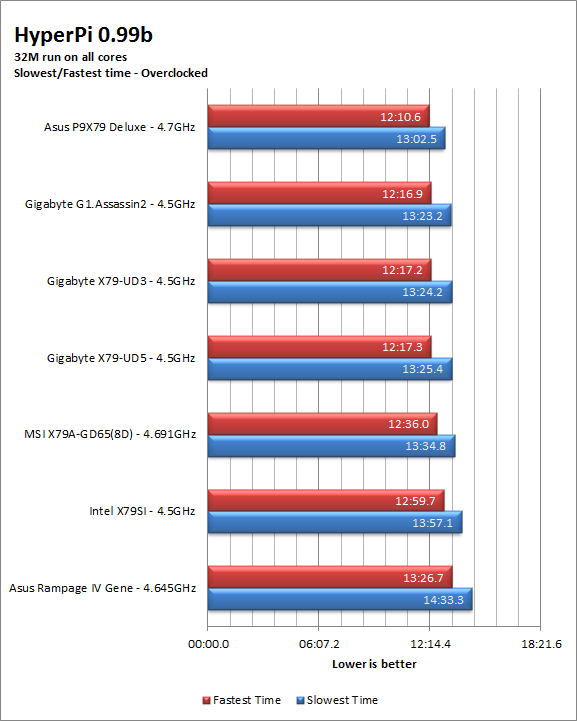
Audio -
Audio is highly subjective. What we find pleasing may sound “off” to you. That is always going to the problem with testing audio; results will vary too widely depending on the tastes of the listener. However, there are ways of measuring the audio output with an objective ear. There is also the issue of audio causing performance issues in gaming and video playback. The reason this is a potential source of concern is that all onboard audio CODECs (Compression/Decompression) are CPU controlled. This means that while the audio chip controls the audio levels and effects of the audio the actual work is done on the CPU. Usually this will not be a problem with today’s powerful CPUs. Even the lower and consumer level products can handle high-end audio these days. But again there is the chance that a bad design or software will hinder your system and performance. On the other side the limits of board space, cost, etc will also prevent the level of audio quality you can get from an add-in board. We test all audio parts with three media types, Movie (DVD), MP3 Music, and Gaming. These are pushed to our Tec On model 55 Tube Amp to see if we can detect any signal issues in the reproduction. 
As we have mentioned before Asus has started to focus on the rest of the motherboard to differentiate their products in the market. We have already seen them attack the issue of cooling with solid fan profiles and extra fan headers and now we are seeing them work on the audio components. On all of the ROG boards Asus is creating a PCB separation between the audio components and the rest of the motherboard. This does have a small but noticeable effect on the audio quality by preventing some signal loss and signal crosstalk between traces (especially when overclocked). We found that the audio was better than many boards out there with good separation in most of the audio sources we fed through it. Asus has also included Creative Labs X-Fi audio software (which includes some nice Dolby enhancements) as well. These combine with the original engineering to give you audio that is a cut above most integrated designs.
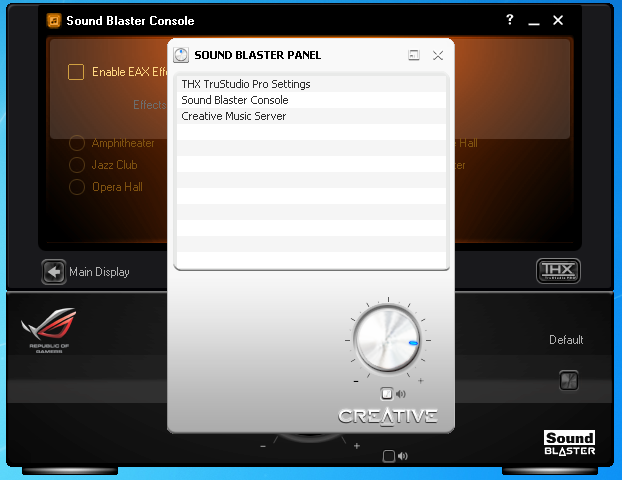 |
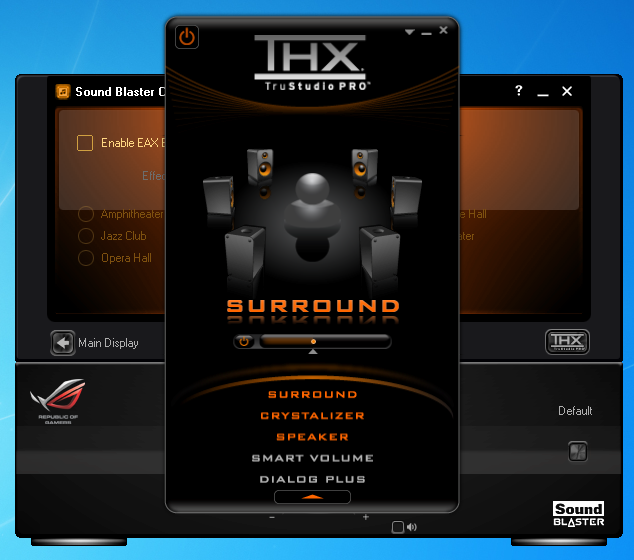 |
Networking -
This one is something that is a requirement anymore. If you have a computer, the chances are good (like 99%) that you are also connected to high-speed internet. With this you need a good and solid LAN chip to make sure that your data flows properly out and back.
Asus has moved to Intel LAN controllers on almost all of their Motherboards. Because of this we are seeing a nice improvement in sustained network bandwidth. This is over the more typical Broadcom or Realtek controllers that other companies are still using. The benefit to the end user is consistent performance over spikes in network throughput.

